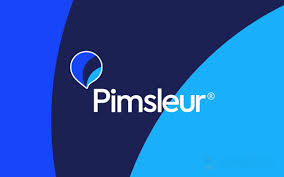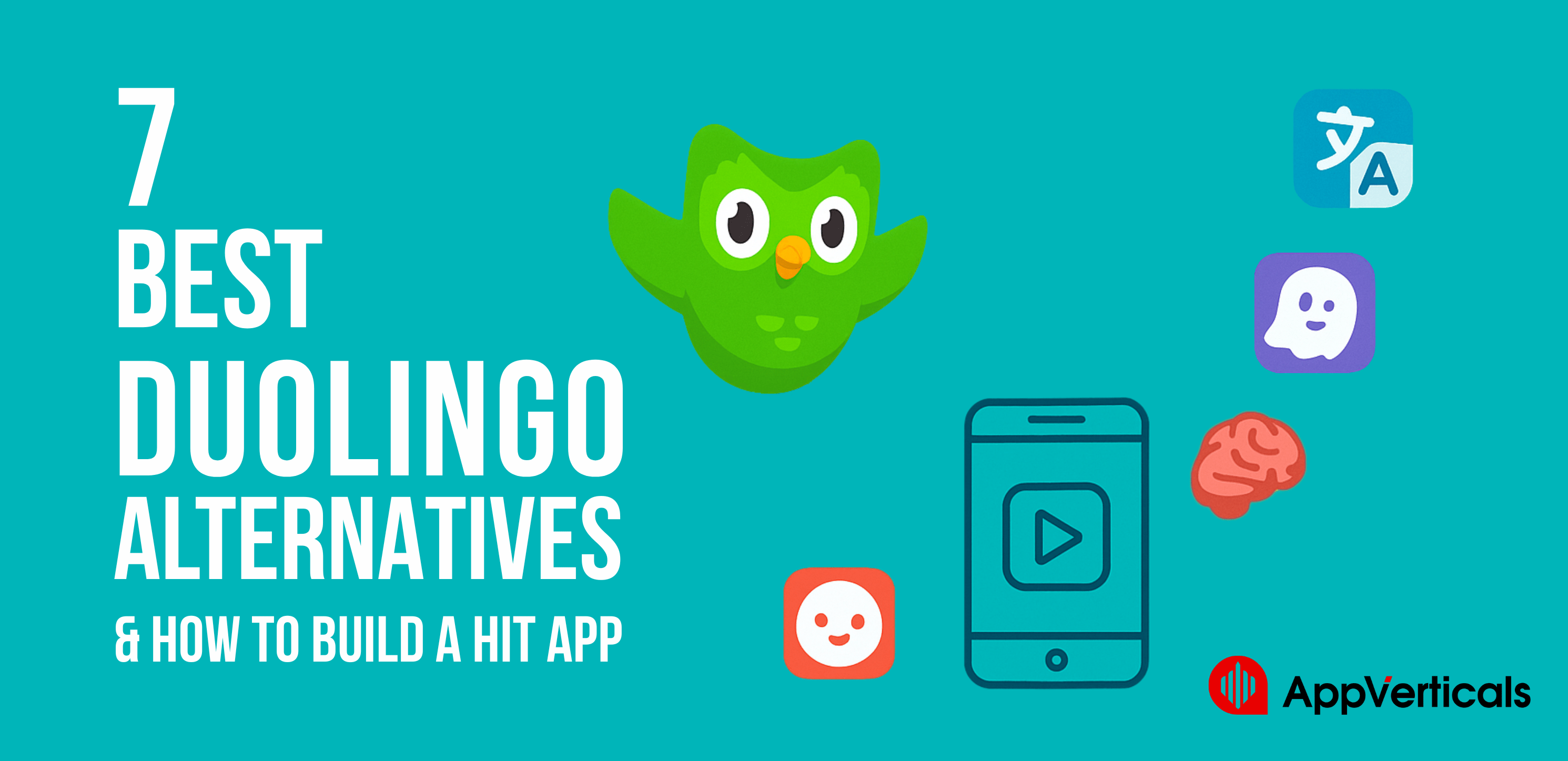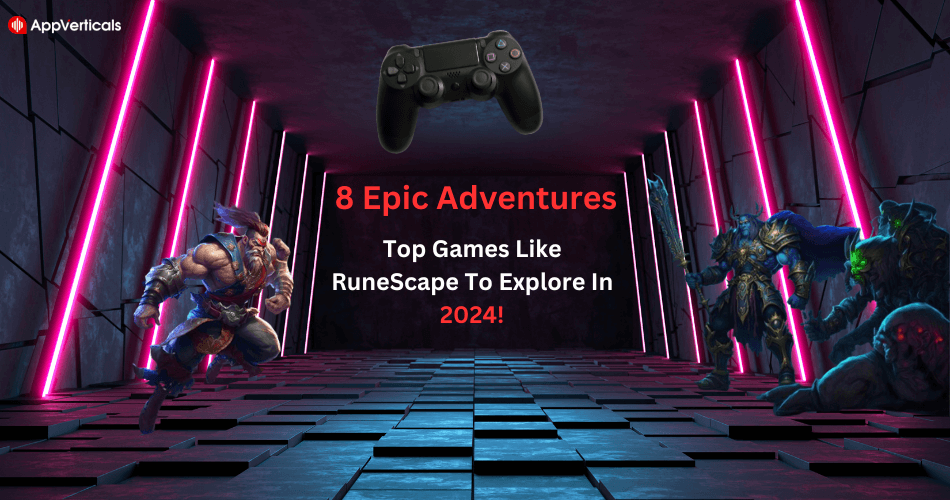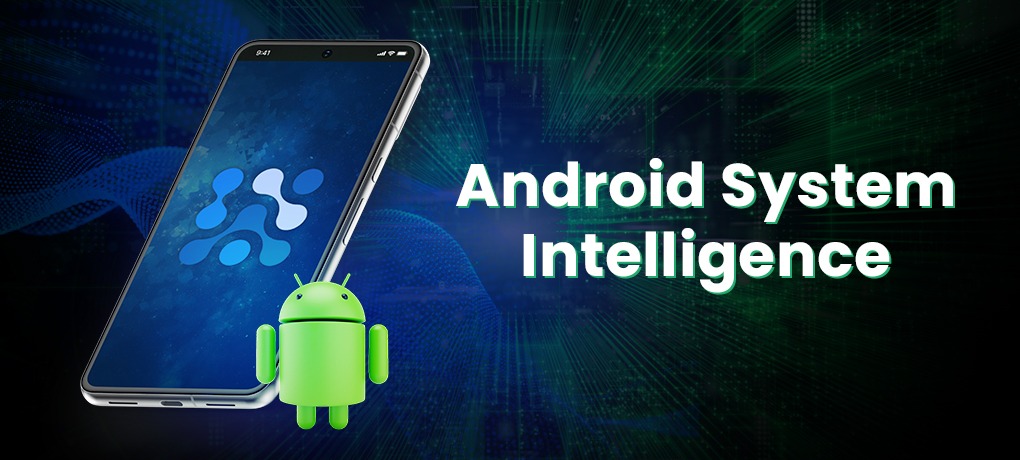Is Duolingo the gold standard—or just the beginning?
As learner expectations evolve and technology advances, the demand for better, smarter, and more personalized language learning tools is only growing. Search trends like “Duolingo alternatives,” “best Duolingo alternatives,” and “apps like Duolingo” are surging. Users are seeking platforms that go beyond gamification—ones that integrate real-world speaking practice, cultural nuance, and adaptive feedback.
In this blog, we’ll dive into:
- What makes apps like Duolingo addictive and effective.
- Where Duolingo falls short (and why users are looking elsewhere).
- The best alternatives to Duolingo in 2025.
- And most importantly—how an education software development company can help you build a language learning app that not only competes with Duolingo but surpasses it in value, pedagogy, and user engagement.
Let’s discuss!
The Psychology Behind Language Learning Apps Like Duolingo
Duolingo didn’t become a household name by accident. Its success lies in how it blends cognitive science, game design, and mobile-first UX into a seamless experience. The app doesn’t just teach Spanish or French—it teaches users to return every day.
Here’s how apps like Duolingo tap into the psychology of habit-building and motivation:
1. Gamification: Making Progress Feel Like Play
Duolingo transformed language learning into a game. With its XP points, streak counters, league rankings, and daily quests, the app doesn’t just reward learning—it rewards logging in.
Stanford’s Behavioral Model shows that small wins and variable rewards increase user retention. Duolingo’s system of instant feedback, leveling up, and reward sounds taps directly into this.
But here’s the catch: while gamification hooks users initially, it doesn’t always drive deep learning or long-term mastery. This is where alternatives to Duolingo aim to differentiate.
2. Microlearning & Cognitive Load Theory
Duolingo’s lessons are short—typically 5 minutes or less. That’s no accident. It aligns with cognitive load theory, which suggests learners retain information better when it’s broken into small, digestible chunks.
This “snackable” learning experience keeps dropout rates low, especially among mobile-first users. The app’s pace also fits busy professionals and Gen Z learners accustomed to short-form content.
However, microlearning’s effectiveness depends on contextual reinforcement—which many free language apps struggle to implement well.
3. Repetition & the Spacing Effect
Duolingo uses spaced repetition algorithms to reinforce vocabulary over time. This is rooted in learning science, where repetition across spaced intervals leads to better long-term recall.
Apps like Memrise (free Duolingo alternatives) use similar algorithms—sometimes more effectively—by integrating native speaker voices, example sentences, or AI-generated practice.
4. The “Streak Effect” and Loss Aversion
The infamous Duolingo streak is more than a vanity stat—it’s psychological gold. According to behavioral economics, humans are more motivated by the fear of losing progress than by the desire to gain more.
But there’s a downside: if the habit becomes about protecting the streak instead of real learning, engagement becomes superficial.
What This Means for EdTech Builders!
If you’re building an app like Duolingo, don’t just copy the game mechanics—integrate learning science principles with adaptive tech.
Think gamification + personalization + real-world practice.
Your users aren’t just players—they’re learners. And the best apps respect that balance.
Top Duolingo Alternatives: What Users Love (and What They Don’t)
Duolingo’s viral success is undeniable — but it’s not for everyone. Learners looking for more structure, advanced grammar, immersive practice, or real-life conversations often find themselves exploring Duolingo competitors that offer deeper or differently styled learning experiences.
Below are 7 top alternatives to Duolingo, thoroughly reviewed to help learners and EdTech founders understand what works, what doesn’t, and where innovation opportunities still exist.
1. Babbel – Best for Structured Grammar & Conversations

Babbel is often considered the most academic Duolingo alternative, with a curriculum designed by linguistic experts. It follows CEFR (Common European Framework of Reference) levels and focuses on real-life dialogues, making it ideal for adult learners aiming for fluency.
Key Features:
- CEFR-aligned course paths for 14 languages.
- Grammar tips integrated into lessons.
- Dialogues and roleplay for practical speaking.
- Personalized review system using spaced repetition.
- Speech recognition (limited compared to others).
Key Stats:
- Over 10 million active users worldwide.
- Rated 4.7⭐ on the App Store (230K+ reviews).
What users love:
- Professional lesson structure (like a private tutor).
- Real-world speaking focus over passive memorization.
- Fewer distractions than gamified platforms.
What they don’t:
- Free content is very limited.
- Less engaging for younger or gamification-driven users.
- Lacks niche/non-European language support.
“Babbel helped me have a real conversation in German in just 3 months. Way more useful than Duolingo’s parroting.”
Verified User (Trustpilot)
2. Mondly – Best for Immersive Speech Practice

Mondly’s strength lies in speech-first learning and its use of AR/VR to simulate real conversations. With support for 40+ languages, it caters to visual and auditory learners looking to quickly build conversational confidence.
Key Features:
- Voice-based chatbot with real-time conversation practice.
- Augmented Reality (AR) lessons with 3D characters.
- Virtual Reality (VR) lessons (via Mondly VR app).
- Daily lessons with instant feedback.
- Personalized progress tracking.
Key Stats:
- Over 120 million downloads globally.
- Covers 41 languages — one of the largest ranges.
What users love:
- Innovative AR/VR interface that feels “alive”.
- Great for speaking practice and pronunciation.
- Broad language selection, including lesser-known options.
What they don’t:
- Grammar instruction is basic.
- Can feel repetitive without variation.
- Premium unlock required for most features.
“Speaking to an AR character in Italian helped me overcome my anxiety faster than any app I’ve used.”
App Store Review
3. Busuu – Best for Human Interaction & Feedback

Busuu bridges the gap between apps and human interaction by allowing users to submit writing/speaking exercises to native speakers for feedback. It’s like having a global language exchange partner built into your app.
Key Features:
- Peer feedback from native speakers.
- CEFR-aligned courses with grammar and vocabulary.
- AI-based review and personalized learning paths.
- Certificates of completion for each level.
- Offline learning (premium only).
Key Stats:
- Over 120 million users.
- 22 languages with CEFR certification.
What users love:
- Real-world writing and speaking correction.
- Great for accountability and social learning.
- More structured than Duolingo.
What they don’t:
- Native speaker feedback requires premium plan.
- Gamification is minimal.
- UI feels less polished than competitors.
“Busuu taught me more about writing naturally in Spanish than 6 months of Duolingo.”
Trustpilot User
4. Memrise – Best for Real-Life Vocabulary in Context
Memrise excels in vocabulary acquisition through native speaker videos and mnemonic devices. It’s built around real-life language and spaced repetition, making it a strong tool for listening and word retention.
Key Features:
- Authentic video clips from native speakers.
- “Learn with Locals” feature for accents and culture.
- Gamified quizzes with memory aids.
- SRS (Spaced Repetition System) for long-term retention.
- Offline access with premium.
Key Stats:
- Over 65 million users.
- “Learn with Locals” includes 30,000+ native speaker videos.
What users love:
- Feels more “real” than cartoonish apps.
- Excellent for picking up accents and intonation.
- Effective vocab building with fast recall.
What they don’t:
- Weak in grammar and sentence building.
- UI can feel cluttered.
- User-generated courses vary in quality.
“Memrise made ‘without’ in Spanish actually stick because I saw it in real conversations.”
Reddit User
5. Pimsleur – Best for Audio-First Learners & Daily Practice

Pimsleur’s audio-only method is tailored for learners who want to speak and understand without screen time. It’s ideal for commuters or multitaskers who benefit from hands-free, spoken repetition.
Key Features:
- 30-minute audio lessons with prompt repetition.
- Focus on pronunciation and conversational fluency.
- Smart voice recognition with feedback.
- Compatible with Alexa, Apple Watch, and car play.
- No reading/writing—pure audio immersion.
Key Stats:
- Over 10 million users.
- Offers 51 languages, including endangered ones (e.g., Ojibwe, Haitian Creole).
What users love:
- Real-world dialogue from day one.
- Effective passive learning (great while commuting).
- Clear progression and retention.
What they don’t:
- Not ideal for visual learners.
- No grammar instruction.
- Subscription required—no robust free tier.
“Pimsleur is what taught me to speak. I use Duolingo for review, but Pimsleur for mastery.”
ProductHunt Review
6. Drops – Best for Visual Vocabulary & Time-Limited Learners

Drops turns language learning into a visual game, focusing on vocabulary through sleek animations and a 5-minute daily format. It’s ideal for people who want bite-sized, engaging vocab sessions.
Key Features:
- 5-minute lesson limit to build habit.
- Visual-first UI with illustrations for every word.
- 45+ languages including rare ones (Ainu, Samoan).
- Zero grammar—pure vocab focus.
- Offline access and streak tracking.
Key Stats:
- Over 35 million downloads.
- Features 45+ languages, including rare ones like Ainu and Maori.
What users love:
- Beautiful, distraction-free interface.
- Encourages consistency with short sessions.
- Great for building foundational vocab.
What they don’t:
- No grammar, conjugation, or syntax.
- Not a complete language learning solution.
- Limited speaking or listening features.
“I use Drops to warm up, then go deeper with Busuu or Mondly. It’s perfect for vocab sprints.”
Google Play User
7. LingoDeer – Best for Asian Languages & Deep Grammar
 Designed by language teachers, LingoDeer excels in Asian languages (Japanese, Korean, Chinese) where grammar and writing systems require more detailed explanations. It’s structured, rich in context, and highly respected among serious learners.
Designed by language teachers, LingoDeer excels in Asian languages (Japanese, Korean, Chinese) where grammar and writing systems require more detailed explanations. It’s structured, rich in context, and highly respected among serious learners.
Key Features:
- Clear grammar explanations after each lesson.
- Reading, writing, listening, and speaking integration.
- Script practice for kana, hanzi, hangul.
- Review quiz modes, cultural insights.
- Offline access.
Key Stats:
- Over 20 million users, especially strong in Japan, Korea, China.
- Rated 4.8 on Google Play (500K+ reviews).
What users love:
- Comprehensive lessons for complex languages.
- Better grammar explanations than Duolingo.
- Cultural relevance included in lessons.
What they don’t:
- Not ideal for casual learners or kids.
- UI is less intuitive than Drops or Duolingo.
- Limited advanced content in some languages.
“Duolingo gave me phrases, LingoDeer taught me how to form sentences.”
Quora Review
Duolingo vs. the Rest – Feature Snapshot
| App | Grammar Depth | Speaking Focus | Vocabulary Strength | User Interaction | Best For |
| Duolingo | Basic | Moderate | Gamified | None | Beginners, casual learners |
| Babbel | Deep | Real-world | Moderate | Limited | Adult learners, structured path |
| Mondly | Basic | Strong | Rich | Minimal | Speech-focused, immersive users |
| Busuu | Structured | Peer-reviewed | Moderate | Human-based | Social learners, feedback-driven |
| Memrise | Minimal | Authentic | Real-world | Limited | Visual learners, vocab builders |
| Pimsleur | None | Audio-first | Practical | None | Commuters, audio learners |
| Drops | None | None | Gamified | None | Visual learners, busy professionals |
| LingoDeer | Deep | Basic | Strong | Limited | Learners of Asian languages |
What It Takes to Build an App Like Duolingo—Or a Better One
Creating an app like Duolingo isn’t just about pretty screens and daily streaks. It’s about combining instructional design, data science, UX psychology, and AI-powered features into one seamless learner journey.
But here’s the good news: you don’t need to reinvent the wheel—you need to make it smarter.
Below is a full-stack breakdown of what it takes to build a world-class language learning app, and where most founders either fall short—or break through.
1. Pedagogical Foundation: Learning Science First
Every successful EdTech product starts with this question:
“How do humans learn best in this context?”
Without a strong instructional backbone, you’ll end up with a “shiny toy” that no one retains anything from. Duolingo simplified this into gamified micro-lessons—but that model has limitations.
Build for:
- CEFR or ACTFL-aligned curriculum.
- Grammar progression with spaced repetition.
- Mixed modality instruction (reading, writing, speaking, listening).
- Feedback loops for reinforcement.
- Personalized adaptive learning paths.
Partner with linguists or educators during MVP development. It sets your UX apart instantly.
2. Core Features to Consider (Beyond the Basics)
To match or beat Duolingo, your app needs to go beyond “drag and drop words” and “tap to translate.”
Here’s a must-have feature checklist:
| Feature | Why It Matters |
|---|---|
| Speech Recognition | Enables pronunciation training & conversational fluency |
| AI Chatbot or Tutor | Simulates real-life scenarios and social practice |
| Gamification Engine | Keeps learners engaged without diluting learning outcomes |
| Spaced Repetition System (SRS) | Reinforces vocabulary & grammar over time |
| Voice Feedback + Intonation Scoring | Helps improve accent & fluency |
| Progress Tracker + Learning Goals | Keeps users accountable and builds trust |
| Multilingual Interface | Supports diverse user bases globally |
| Offline Mode | Critical for learners with limited internet access |
| Localization & Cultural Modules | Makes learning relevant beyond grammar |
| Push Notifications (Behaviorally Tuned) | Boosts engagement through personalization |
3. Tech Stack: What Powers These Features?
You’ll need a modular, scalable, and secure infrastructure. We recommend:
- Frontend: Flutter or React Native for cross-platform support
- Backend: Node.js or Django with RESTful API
- Database: PostgreSQL + Firebase (for real-time sync)
- Speech & NLP: Google Cloud Speech-to-Text, Whisper by OpenAI, or Amazon Lex
- Gamification Engine: Custom logic with Unity integrations or BadgeOS-style frameworks
- AI/ML Layer: Personalization via TensorFlow Lite or Scikit-Learn models
Want to beat Duolingo? Build for voice-first mobile interaction, not just touch.
4. Monetization: Freemium, Subscription, or Hybrid?
Duolingo popularized the freemium model—but new players are experimenting with premium-only or B2B licensing models.
Options you can explore:
- Freemium with upsell to pronunciation AI, offline mode, or cultural packs.
- Monthly/yearly subscriptions (Babbel-style).
- Lifetime access with tiered pricing.
- White-labeled versions for schools or HR training.
- Ad-free UX as a premium value add.
Combine B2C and B2B licensing to diversify income streams.
Why Do You Need a Specialized Educational Software Development Partner?
You don’t just need a dev team. You need EdTech-native engineers and UX strategists who:
- Understand pedagogy & learning theory
- Can design gamification with purpose
- Know how to integrate APIs for speech, AI, and user behavior modeling
- Prioritize accessibility and localization
- Build systems that scale with user feedback and analytics
And that’s where we come in.
How AppVerticals Help You Build Your Duolingo Alternative!
![]()
As a dedicated EdTech software development company, AppVerticals offers:
- Custom Learning Experience Design (based on your learners & goals)
- Cross-platform Mobile App Development (iOS, Android, Web)
- AI Integration for Personalization & Speech Feedback
- Gamification Architecture that retains and converts
- Analytics Dashboards for Learner Insights
- Educational Strategy + UX/UI Copywriting
Whether you’re building an app for school-age learners, corporate upskilling, or immersive travel language prep—we tailor everything around the learning journey that gets results.
The Future of Language Learning Apps: What’s Next?
As user expectations evolve, the question isn’t just “What’s the best Duolingo alternative today?”—it’s “What will tomorrow’s learners demand?”
In 2025 and beyond, language learning is being transformed by AI, voice-first interfaces, personalization engines, and contextual immersion. Forward-thinking founders aren’t just building apps—they’re building ecosystems for lifelong learning.
Here’s what’s on the horizon—and what you should be planning for now.
1. AI Tutors That Understand Context, Not Just Grammar
AI has moved far beyond multiple choice questions. Using models like GPT-4 and Whisper, it’s now possible to:
- Simulate full voice conversations with contextual responses
- Offer real-time pronunciation + grammar correction
- Personalize lessons based on how users speak or write
- Generate adaptive practice scenarios based on progress
Soon, your app won’t just teach—it’ll talk back, guide, and coach.
Imagine this: A Spanish learner says, “Without in Spanish Duolingo never made sense to me.”
Your AI tutor replies: “Let me show you 3 uses of ‘sin’ in daily life—and quiz you after breakfast tomorrow.”
That’s not just smart. That’s sticky.
2. Voice-First Learning: The Rise of Ear-First UX
As smart assistants, wearables, and AirPods proliferate, users want to learn on the go—without screens. Think:
- Micro-podcasts for language drills during commutes
- Wake-word activated lessons (“Hey app, start my French quiz”)
- Real-time shadowing practice while walking or cooking
- Whispered corrections during live conversations (via hearables)
Apps like Mondly are early adopters here. But there’s still massive room for innovation in voice-first EdTech.
3. Hyper-Personalization Through Learning Analytics
Your app should know when, where, and how your users learn best—and adapt.
Think:
- Daily lesson timing based on user behavior
- AI-generated recap summaries based on errors
- Smart flashcard decks tailored to memory retention patterns
- Integration with calendars to adjust lessons to routines
The more you let data drive content, the more engagement you’ll drive—especially among Gen Z and Gen Alpha learners.
4. Culture-First Learning for Global Citizens
As remote work and digital nomadism boom, users don’t just want to speak the language—they want to fit in.
That means:
- Lessons on body language, idioms, and local customs
- Real-life interaction scenarios like haggling, networking, dating
- Cultural immersion packs (festivals, food, social norms)
This is where your app becomes not just a tool—but a passport to deeper connection.
5. Community-Powered Learning Experiences
EdTech apps are moving toward social-first design:
- Peer feedback, like Busuu’s native-speaker corrections
- Language exchange matchmaking (video/audio chats)
- Leaderboards, group challenges, team goals
- User-generated content (flashcards, memes, real-world clips)
Why? Because learning is more motivating when it feels like you’re doing it with others, not alone.
Bottom Line!
Duolingo may have led the wave, but the next generation of language apps will be defined by:
- Smarter AI
- More human UX
- Faster fluency paths
- Better pedagogy backed by tech
Whether you’re an EdTech founder, a startup studio, or an educational institute ready to digitize your language programs—the time to build is now.
Let’s Build the Next Big Thing in Language Learning
As an EdTech software development company, we’re not here to just code your idea. We’re here to strategize, build, and scale a product that actually teaches—and retains.









